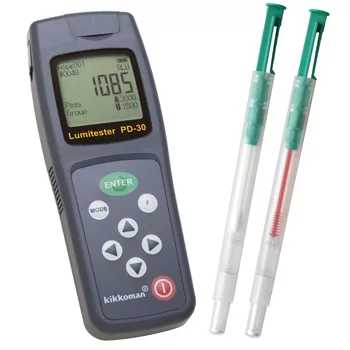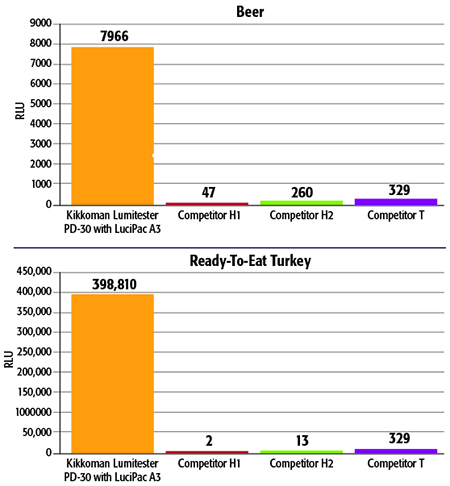Verification of Effective Sanitation Using A3® ATP Technology

Sanitation is critical to food safety; ineffective cleaning can affect the appearance and taste of food, harbor microorganisms and promote the production of biofilms. ATP hygiene-monitoring tests are widely used in all types of food processing plants, because they are easy to use and provide immediate feedback and verification of sanitation processes, making them a crucial tool. These tests have been successfully used to monitor environmental contamination, including food residues and bacteria, and detect biofilms that can harbor pathogens and interfere with the detection and removal of allergens. Most food processing facilities in every category use ATP tests for sanitation verification; experts estimate that more than 50 million tests are conducted every year worldwide.
Conventional ATP Tests
Conventional ATP tests, however, have a weakness in that the method can detect only the ATP molecule, which has been shown to quickly degrade on surfaces. However, a test that can detect ATP and its metabolites (ATP+ADP+AMP or A3) will provide a higher sensitivity due to the increase in signal to be detected, will be less likely to produce false negatives and will provide for an overall more accurate verification of sanitation.
Kikkoman LuciPac A3 Technology
Using advanced enzyme biochemistry, the Kikkoman Biochemifa Company has been able to develop an advanced ATP hygiene-monitoring test that detects the total concentration of A3. By incorporating two innovative enzymatic reactions into the test reagents, the test can detect and quantify A3 concentration, and the level of detection and sensitivity of the ATP test can be dramatically increased.
Independent Laboratory Testing
An independent evaluation was conducted by a leading food safety laboratory, comparing the Kikkoman A3® technology with two leading conventional ATP tests. In this evaluation, the detection by the A3 test was substantially higher in a wide variety of foods. Data for ready-to-eat turkey and beer are shown below, and results from this independent evaluation on many other common foods are available on the Weber Scientific website (www.weberscientific.com).
Summary
ATP testing is an important tool in effective sanitation. Improving on the conventional ATP test by using new and innovative chemistry has created a far more sensitive and effective test. Using this method, food processors now have a far-more sensitive method for the detection of food residues that leads to a far more effective sanitation program and overall food safety.
Find Out More
Kikkoman A3 technology is as easy to use as a conventional ATP test but is more effective. To find out how this advanced test can improve your sanitation and food safety programs, contact Weber Scientific at 800.328.8378 for more details and a special introductory offer.
Weber Scientific Sanitation Supplies
Looking for quick answers on food safety topics?
Try Ask FSM, our new smart AI search tool.
Ask FSM →






